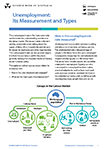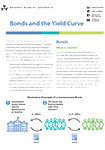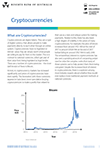Explainers
The ‘Explainers’ series provides explanation of key economic concepts, the Australian economy and the role of the Reserve Bank.
What is Monetary Policy?
Explains what monetary policy is, what it aims to achieve and how monetary policy decisions are both made and implemented.
The Transmission of Monetary Policy
Describes how changes made by the Reserve Bank to its monetary policy settings flow through to economic activity and inflation.
How the Reserve Bank Implements
Monetary Policy
Describes the Australian cash market and explains how the Reserve Bank ensures that the cash rate is as close as possible to its target.
Unconventional Monetary Policy
Describes the different tools used by central banks (including the Reserve Bank of Australia) when conducting unconventional monetary policy.
Causes of Inflation
Describes what inflation is and the main causes of changes in the inflation rate.
Australia's Inflation Target
Describes the inflation target, why the Reserve Bank targets inflation and how the target works.
Inflation and its Measurement
Describes how inflation is measured, explains how different indicators of underlying inflation are calculated, and outlines some of the limitations of using the Consumer Price Index.
Economic Growth
Explains what economic growth is, how it is measured and explores the concepts of aggregate demand and supply.
Recession
Describes the nature of the business cycle, different approaches to identifying a recession and some of the recessions that have occurred in Australia.
Productivity
Explains what productivity is, how it is measured, its drivers and the benefits of productivity growth.
Unemployment: Its Measurement and Types
Explains how the unemployment rate is measured and describes the main types of unemployment.
The NAIRU – Non-Accelerating Inflation Rate of...
Explains what the NAIRU is, why it is important and what determines its level.
Drivers of the Australian Dollar Exchange Rate
Explains the factors that drive changes in the Australian dollar exchange rate over time.
Exchange Rates and the Australian Economy
Explains how changes in the value of the Australian dollar affect economic activity and inflation in Australia, along with the nation's balance of payments.
Exchange Rates and their Measurement
Explains the concept of an exchange rate, how exchange rates can be measured and the different types of exchange rate regimes that exist.
The Balance of Payments
Examines the structure of Australia's balance of payments, describes the relationship between its accounts and explains the accounting framework.
Trends in Australia's Balance of Payments
Describes the longer-term trends within the two sides of Australia’s balance of payments: the current account and the combined capital and financial account.
Bonds and the Yield Curve
Explains what a bond is, how the yield curve is formed from a series of bond yields and why the yield curve is important.
Banks' Funding Costs and Lending Rates
Explains what banks' funding costs and lending rates are and what influences them.
Australia and the Global Economy – Terms of Trade...
Discusses the causes of the terms of trade boom of 2005 to 2012 and explains the way in which it affected the Australian economy.
The Global Financial Crisis
Summarises the main causes of the global financial crisis, how the crisis unfolded and how policymakers responded to it in Australia and abroad.
What is Money?
Explains the features of money and the unique functions that money performs in an economy.
Digital Currencies
Explains what digital currencies are, including cryptocurrencies and Central Bank Digital Currencies, and discusses some of the public policy implications.
Origins of the Reserve Bank of Australia
Traces the origins of the Reserve Bank to creation of the Commonwealth Bank of Australia in 1911, and outlines the growth in central banking responsibilities.






















